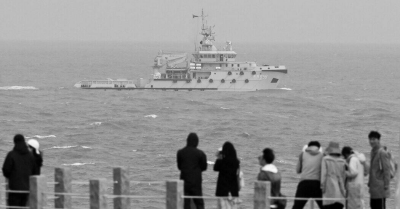纽约时报中文网 - 英文原版-英China Is Running Out of Lines to Cross in the Taiwan Strait
February 27, 2024 3 min 481 words
这篇报道揭示了台海紧张局势的加剧,指出中国在台湾问题上逐渐失去突破口。文章详细分析了当前形势,突显了中方在台海问题上的挑战。然而,报道似乎缺乏对台湾民意和国际社会关切的深入探讨。对于中国而言,要谨慎处理台湾问题,维护地区稳定至关重要。然而,此文未深入分析解决之道,忽略了多边外交与对话的可能性。在评述时,应更全面地考虑各方立场,提供更具建设性的观点,促使读者更好地理解与关注台海局势的复杂性。
In 2020 the balance of military power in the Taiwan Strait began a gradual but profound shift in China’s favor.
That August, Alex Azar, then the health and human services secretary, became the highest-ranking U.S. cabinet official to visit Taiwan in more than four decades. Though he was there to talk about the pandemic, China’s People’s Liberation Army (P.L.A.) responded by carrying out large-scale military exercises around the self-governing island, sending aircraft over the median line of the Taiwan Strait, the halfway point between China and Taiwan, for only the third time in more than 20 years. Since then, China has responded to such visits and other perceived provocations by flying more than 4,800 sorties, with growing numbers of aircraft flying in locations previously seen as off-limits and conducting dozens of increasingly complex air and naval military exercises around Taiwan.
The P.L.A.’s now-normalized presence around Taiwan raises the risk of an accidental confrontation. But over the longer term, it has also gradually created a dangerous sense of complacency in Taipei and Washington while giving China the crucial operational practice it might one day need to seize the island.
As a military analyst specializing in China and Taiwan who has spent the past two years managing an open-source database tracking Chinese military activity, I am deeply concerned about the dangers that this activity poses. Alarms should be ringing, but neither Taiwan nor the United States has taken meaningful action to deter China, and Taiwan’s response has been inconsistent and lacks transparency, which may further embolden Beijing. A more robust approach is needed to deter China from escalating the situation.
In 2020, shortly after China began raising the pressure, Taiwan’s Ministry of National Defense started releasing daily reports on Chinese military activity inside the island’s Air Defense Identification Zone, a perimeter extending beyond Taiwan’s territorial waters and airspace that is monitored to provide early warning of approaching Chinese planes or missiles. In previous years, China rarely entered the zone. But in 2020, P.L.A. aircraft breached it nearly 400 times. Last year, that number exceeded 1,700.
Beijing has steadily pushed the envelope. P.L.A. forces also rarely crossed the median line of the Taiwan Strait. But in August 2022, after a visit to Taiwan by Nancy Pelosi, then the speaker of the U.S. House of Representatives, Chinese forces crossed the line 302 times, essentially erasing it as a functional boundary. Today, Chinese aircraft continue to cross the line almost daily, leaving Taiwan only minutes to assess China’s intentions in a dangerous guessing game that leaves the door open for miscalculation. Since last year, China also has essentially established a permanent naval presence around the island.

